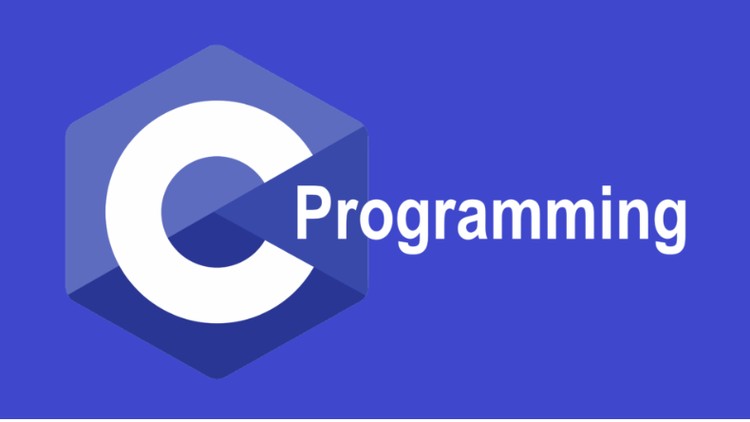(C Programming Tutorials)
C Dynamic Memory Allocation
In this tutorial, you’ll learn to dynamically allocate memory in your C program using standard library functions: malloc(), calloc(), free() and realloc().
Sometimes the size of the array you declared may be insufficient. To solve this issue, you can allocate memory manually during run-time. This is known as dynamic memory allocation in C programming.
To allocate memory dynamically, library functions are malloc(), calloc(), realloc() and free() are used. These functions are defined in the <stdlib.h> header file.
C malloc()
The name “malloc” stands for memory allocation.
The malloc() function reserves a block of memory of the specified number of bytes. And, it returns a pointer of void which can be casted into pointers of any form.
Syntax of malloc()
ptr = (castType*) malloc(size);Example
ptr = (float*) malloc(100 * sizeof(float));The above statement allocates 400 bytes of memory. It’s because the size of float is 4 bytes. And, the pointer ptr holds the address of the first byte in the allocated memory.
The expression results in a NULL pointer if the memory cannot be allocated.
C calloc()
The name “calloc” stands for contiguous allocation.
The malloc() function allocates memory and leaves the memory uninitialized. Whereas, the calloc() function allocates memory and initializes all bits to zero.
Syntax of calloc()
ptr = (castType*)calloc(n, size);Example:
ptr = (float*) calloc(25, sizeof(float));The above statement allocates contiguous space in memory for 25 elements of type float.
C free()
Dynamically allocated memory created with either calloc() or malloc() doesn’t get freed on their own. You must explicitly use free() to release the space.
Syntax of free()
free(ptr);This statement frees the space allocated in the memory pointed by ptr.
Example 1: malloc() and free()
// Program to calculate the sum of n numbers entered by the user
#include <stdio.h>
#include <stdlib.h>
int main(){
int n, i, *ptr, sum = 0;
printf("Enter number of elements: ");
scanf("%d", &n);
ptr = (int*) malloc(n * sizeof(int));
// if memory cannot be allocated
if(ptr == NULL)
{
printf("Error! memory not allocated.");
exit(0);
}
printf("Enter elements: ");
for(i = 0; i < n; ++i)
{
scanf("%d", ptr + i);
sum += *(ptr + i);
}
printf("Sum = %d", sum);
// deallocating the memory
free(ptr);
return 0;
}Here, we have dynamically allocated the memory for n number of int.
Example 2: calloc() and free()
// Program to calculate the sum of n numbers entered by the user
#include <stdio.h>
#include <stdlib.h>
int main(){
int n, i, *ptr, sum = 0;
printf("Enter number of elements: ");
scanf("%d", &n);
ptr = (int*) calloc(n, sizeof(int));
if(ptr == NULL)
{
printf("Error! memory not allocated.");
exit(0);
}
printf("Enter elements: ");
for(i = 0; i < n; ++i)
{
scanf("%d", ptr + i);
sum += *(ptr + i);
}
printf("Sum = %d", sum);
free(ptr);
return 0;
}
C realloc()
If the dynamically allocated memory is insufficient or more than required, you can change the size of previously allocated memory using the realloc() function.
Syntax of realloc()
ptr = realloc(ptr, x);Here, ptr is reallocated with a new size x.
Example 3: realloc()
#include <stdio.h>
#include <stdlib.h>
int main(){
int *ptr, i , n1, n2;
printf("Enter size: ");
scanf("%d", &n1);
ptr = (int*) malloc(n1 * sizeof(int));
printf("Addresses of previously allocated memory: ");
for(i = 0; i < n1; ++i)
printf("%un",ptr + i);
printf("nEnter the new size: ");
scanf("%d", &n2);
// rellocating the memory
ptr = realloc(ptr, n2 * sizeof(int));
printf("Addresses of newly allocated memory: ");
for(i = 0; i < n2; ++i)
printf("%un", ptr + i);
free(ptr);
return 0;
}When you run the program, the output will be:
Enter size: 2 Addresses of previously allocated memory:26855472 26855476 Enter the new size: 4 Addresses of newly allocated memory:26855472 26855476 26855480 26855484
Disclaimer: The information and code presented within this recipe/tutorial is only for educational and coaching purposes for beginners and developers. Anyone can practice and apply the recipe/tutorial presented here, but the reader is taking full responsibility for his/her actions. The author (content curator) of this recipe (code / program) has made every effort to ensure the accuracy of the information was correct at time of publication. The author (content curator) does not assume and hereby disclaims any liability to any party for any loss, damage, or disruption caused by errors or omissions, whether such errors or omissions result from accident, negligence, or any other cause. The information presented here could also be found in public knowledge domains.
Learn by Coding: v-Tutorials on Applied Machine Learning and Data Science for Beginners
Latest end-to-end Learn by Coding Projects (Jupyter Notebooks) in Python and R:
All Notebooks in One Bundle: Data Science Recipes and Examples in Python & R.
End-to-End Python Machine Learning Recipes & Examples.
End-to-End R Machine Learning Recipes & Examples.
Applied Statistics with R for Beginners and Business Professionals
Data Science and Machine Learning Projects in Python: Tabular Data Analytics
Data Science and Machine Learning Projects in R: Tabular Data Analytics
Python Machine Learning & Data Science Recipes: Learn by Coding
R Machine Learning & Data Science Recipes: Learn by Coding
Comparing Different Machine Learning Algorithms in Python for Classification (FREE)
There are 2000+ End-to-End Python & R Notebooks are available to build Professional Portfolio as a Data Scientist and/or Machine Learning Specialist. All Notebooks are only $29.95. We would like to request you to have a look at the website for FREE the end-to-end notebooks, and then decide whether you would like to purchase or not.
